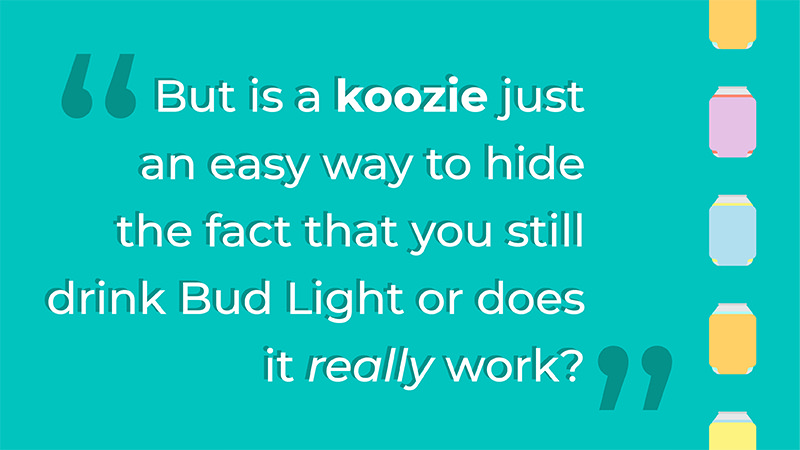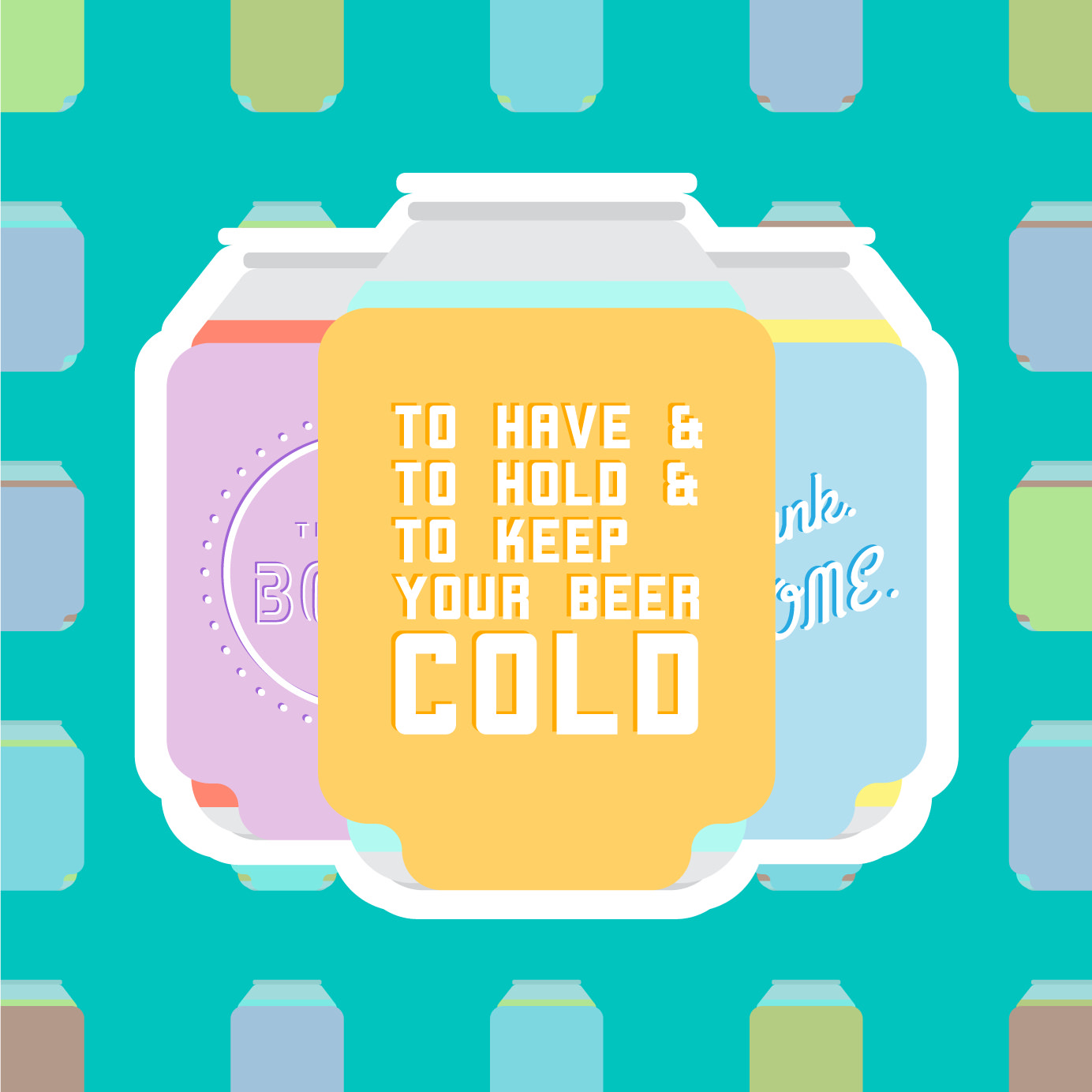In the future, when visitors from a far-off galaxy discover our planet and sift through the rubble of a once-great civilization, they will undoubtedly stumble upon a koozie.
Their alien phalanges will brush the dirt away to reveal a squishy, neon-blue relic. They’ll travel back home, eager to show their species the riches from the long voyage and pass along the message from a deep corner of the universe: I’m Not Drunk I’m Awesome.
*
It’s safe to assume nearly everyone reading this article has, at one point or another, had a koozie of their own, though that is not a SurveyMonkey anyone wants to take. If you’ve attended a wedding, barbecue, or lakeside hang with friends in the last 10 years, you’ve likely encountered a koozie.
Emblazoned with company logos, custom hashtags, or boozy idioms, koozies are an almost-useful, ubiquitous way of insulating cold beer from warm hands. They go by many names, including coolie, beer sleeve, drink sheath, beer rubbers, coldy-holdy, candom, and more.
Kitschy products are rife with tall tales of exact origin. The koozie is no exception. Here’s what we (mostly) know.
Beverage insulation has been around for centuries, thanks to very adorable and very British tea cozies. The concept of keeping a beer cold, however, has only existed since the late 1960s.
Australian inventor Alex Lang is believed to have been the first to build a contraption devoted to beer chilling. His was perhaps the greatest-named product in the history of invention: the stubby holder. (Beer in Australia either comes in a standard 750 milliliter longneck or a 375 milliliter short and, well, stubby bottle.)
The first iteration of this iconic invention may have come from Down Under, but the koozie in its present form is as American as John Deere tractors, bald eagles, and Paul Revere waking folks up in the middle of the night.
Idaho inventor Bonnie McGough filed a patent in 1980 for an “insulated beverage cozy for use with cold drinking utensils such as a twelve-ounce beverage can.” McGough’s design wasn’t exactly the tacky darling we use today — she intended hers to be stuffed with goose down.
Within two short years, however, Radio Cap Corporation (RCC), a company specializing in customizable baseball caps, began producing Styrofoam can coolers. To keep costs low and improve efficiency, it switched to more pliable foam and neoprene models. Norwood Promotional Products (NPP) acquired RCC in 1991 and the koozie brand effectively came to be what it’s known as today.

Official KOOZIE® products are now manufactured out of Red Wing, Minn. The company website touts its design as having a “tough, light, leather-like exterior” as well as “on-trend colors and stylish designs.” There’s even a promo video with voice-over that they decided would be a good idea to make.
Still, it hasn’t been all sunshine and butterflies for the the humble beverage insulator. The promotional products industry was thrown into mild disarray 10 years ago. In what is likely the least thrilling legal battle of all time, trademark owners NPP (a subsidiary of Bic Graphic, the pen and lighter people) filed suit against KustomKoozies, an online retailer, for allegedly violating the terms of a previously discussed agreement that involved the K-word in all caps with the appropriate subscript.
To save you the 35-page agony of reading legalese about fucking neoprene, an Indiana judge ruled in part for both: There were valid contracts that KustomKoozies breached but, ultimately, Norwood didn’t provide KustomKoozies with an adequate notice before they tried to terminate the licensing contract.
Shrug emoji.
That hasn’t stopped hordes of entrepreneurial drinkers trying their best to jump on the koozie craze. Over the years there have been countless knockoffs, iterations, and variations, including but not limited to a Chewbacca model, absurdly expensive burlap koozies, Vino Hug so wine drinkers won’t feel left out, and far too many others to name in this article. There’s even one for those quiet Saturdays of Netflix & Take Down an Entire Bottle of Jägermeister.
The question remains. Is a koozie just an easy way to hide the fact that you secretly still drink Bud Light, or does it really work? Five years ago scientists at the University of Washington set out to determine the actual science involved. They concluded that the condensation on the outside of a can or bottle on a hot summer day carries heat and will lower the temperature of a beverage nearly 6 degrees Fahrenheit in just five minutes.
“Probably the most important thing a beer koozie does is not simply insulate the can, but keep condensation from forming on the outside of it,” UW professor Dale Durran said.
What we can infer from Professor Durran is that summertime drinkers have three options. You could shell out nearly $30 for a high-tech insulation system. Alternatively, save yourself the money and bedazzle an old (clean) sock. Or do it the old-fashioned way: Just drink faster.
